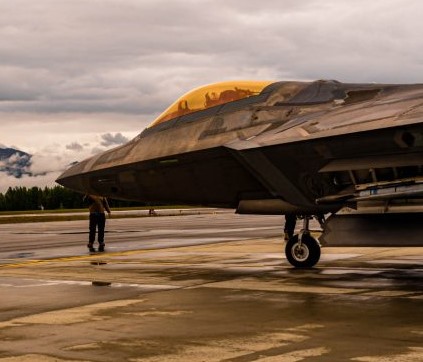The U.S. Air Force (USAF) and Lockheed Martin are beginning the second phase of yearly iterative updates to the F-22 fleet, planning software tweaks and quick-turn upgrades that both sides say are laying the groundwork for how next-generation aircraft will be sustained.
Though the service has marked the Raptor for retirement once the future, secretive Next Generation Air Dominance (NGAD) platform comes online, it is still investing heavily in keeping the F-22 fleet modernized.
The service’s fiscal 2024 budget request calls for $3.5 billion in F-22 research, development, test and evaluation for the fleet, with $19.5 billion planned over the next five years.
Brig. Gen. Dale White, the Air Force Life Cycle Management Center’s (AFLCMC) program executive officer for fighters and advanced aircraft, says the investments are needed to keep the F-22 ready to face the current threat and beyond.
Noteworthy, after Lockheed Martin completed the major Increment 3.2B upgrade on the F-22 fleet in 2020-2021, the company and the Air Force shifted the focus into a new approach of iterative updates called the Raptor Agile Capability Release (RACR) program.
The first phase was completed in 2022 and focused on an Open Systems Architecture update that added hardware for the Raptor to be able to transmit Link 16.
RACR’s second phase, Release 2, is a software modification program that recently received approval, and initial fielding has begun.
The next phase, Release 3, is expected to follow about 12-18 months later after the second release.
The Air Force and Lockheed are testing low-drag tanks and pylons as part of a push to improve the Raptor’s range, though fielding of that is expected to be after the installation of the RACR Release 2.
Lockheed is installing the RACR upgrades under the Advanced Raptor Enhancement and Sustainment Contract, a maximum $10.9 billion contract awarded in 2021.
These upgrades are laying the groundwork for an approach on future aircraft AFLCMC.





